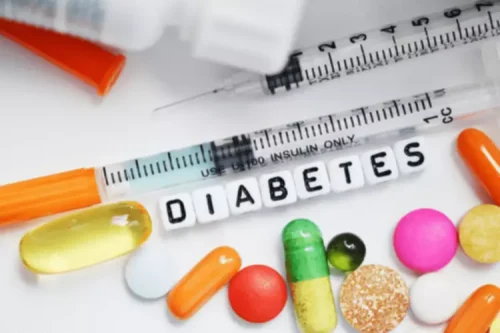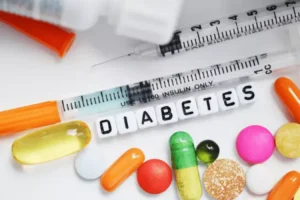The Brain on Drugs How Drugs and Alcohol Affect the Brain

Moreover, new alleles are also being discovered wherein an association exists between the stated allele and difference between drugs and alcohol alcoholism. As a reviewer, I would suggest one possible way to overcome much of the conflicting reports would be to perform studies with a much larger sample size. Such efforts are hampered by inadequate funding, so collaborative efforts on a national scale, combining the skills and infrastructures of different hospitals and psychiatric care centers could potentially overcome this problem. In addition, one of the latest studies on this pathway found an association between a polymorphism in the promoter of a glutamate receptor subunit gene and alcoholism. The study was conducted by68 and the study found that short alleles were significantly less frequent among AD subjects. The study concludes by stating that it was the 1st time that such an association was found with the stated polymorphism and AD.

Course of Brain Structural Changes in Alcoholism
- The carriers of one L (long) allele showed a significantly higher availability of SERT in the striatum compared with non-L carriers.
- There are techniques for dampening or diverting thinking in response to drug cues, including meditation, but the most powerful of all ways to drown out craving may be by getting connected to others.
- Concomitant with this course, measurable decline and improvement occurs in selective functions of cognitive and motor abilities (Brandt et al. 1983; Parsons 1983).
- Its beginnings are influenced by circumstances and genetics; it becomes well trodden, habitual, initially reinforced by pleasurable effects and then by cues; and, for some, it will become a road they can never leave.
- Most of the data on ethanol effects on synaptic plasticity come from studies in the hippocampus.
- However, the process varies for each individual based on various factors such as genetics, mental health, and the consistency of rehabilitation efforts.
Teens should be provided with complete information about drug abuse and its perils, so that they have a better opportunity to make good life choices. • the amygdala, which registers emotional significance of perceptions, is highly responsive to drug-related cues and sets in motion the rise and fall of craving. Alcohol, a widely consumed but often underestimated substance, can have profound Drug rehabilitation effects on both the brain and CNS. This dysfunction drives compulsive substance use despite harmful consequences, reinforcing the addiction cycle. Descending neurons are neurons that carry information from the brain to the chest or abdominal region. However, the low-affinity and transient molecular interactions of ethanol make fulfillment of all four criteria challenging.
Withdrawal/Negative Affect Stage: Extended Amygdala
Each system and component requires different brain regions for processing, and disruption of local brain regions or systems are the foundation of different types of memory impairment or amnesia. The development of MR diffusion tensor imaging (DTI) provided a noninvasive approach for in vivo examination of the microstructure of brain tissue, particularly white matter (for a review of the method, see Rosenbloom and Pfefferbaum 2008). White matter pathology is a consistent finding in the brains of alcohol-dependent people. Postmortem study of alcoholics had identified pathology in white matter constituents and noted demyelination (Lewohl et al. 2000; Tarnowska-Dziduszko et al. 1995), microtubule disruption (Paula-Barbosa and Tavares 1985; Putzke et al. 1998), and axonal deletion. A striking feature of alcoholics is their continued drinking despite their knowledge of the untoward physiological or psychological consequences of their behavior.
How Does the Brain React to Relapse Cues?

The pathways to addiction can be difficult to understand, because substance abuse, as a result of the intense burst of pleasure it brings, rapidly rewires the circuitry of the brain to become highly efficient at drug wanting and seeking. The sensation of pleasure orchestrated by dopamine likely arose to encourage repetition of behaviors that support individual and species survival—eating, interacting with others, having sex. The high level of direct stimulation by drugs of abuse powerfully encourages repetition.
- The various ways drugs affect neurotransmitters can change the information being processed by the brain.2 Drugs prescribed by a doctor, such as prescription painkillers and antidepressants, can be used to adjust brain chemistry in an individual experiencing physical or emotional distress.
- Identifying the changes that occur in the brain as a result of alcohol and other drug (AOD) use is important to understanding the development of AOD addiction.
- Likewise, in the study carried out by59 which aimed at understanding the role of 5’-HTTLPR polymorphism with risky alcohol use in adolescence, there was no correlation with drinking to cope motives and the 5’-HTTLPR polymorphism.
- Also, the person will often need to take larger amounts of the drug to produce the familiar high—an effect known as tolerance.
- Stimulants also cause the release of norepinephrine, a neurotransmitter that affects autonomic functions like heart rate, causing a user to feel energized.
What are the effects of alcohol and drug abuse on brain health?
Additionally, excess alcohol is defined as drinking more than 8 drinks a week (women) and 15 a week (men), or consuming alcohol if you are pregnant or younger than age 21. These brain images show the reward-related circuity in the cortical and subcortical regions of the brain that tend to be more active when a child is successful at achieving a reward. While all of the images show the regions of the brain that are active to reward, the regions in yellow and red are the most active. Understanding the basic science of addiction shows that it’s not difficult to become dependent on an illicit substance, legal or not. Addiction can truly happen to anyone, and that’s why it’s so important that help is as accessible as possible.

Long-term drug use can lead to persistent changes in the brain, making it more difficult to quit and recover from addiction. The cellular structure of the brain is affected by heavy drinking and drug use as well. The gray cells control thinking and feeling while the white cells provide the connection and communication between the gray cells. Persistent drug and alcohol use has been proven to kill the white cells in the brain. This severs the communication pathways so that information is not passed along properly.
Short-Term Effects
Fentanyl is a synthetic opioid medication that is used for severe pain management and is considerably more potent than heroin. Prescription fentanyl, as well as illicitly manufactured fentanyl and related synthetic opioids, are often mixed with heroin but are also increasingly used alone or sold on the street as counterfeit pills made to look like prescription opioids or sedatives. The preoccupation/anticipation stage of the addiction cycle is the stage in which a person may begin to seek substances again after a period of abstinence. In people with severe substance use disorders, that period of abstinence may be quite short (hours).

